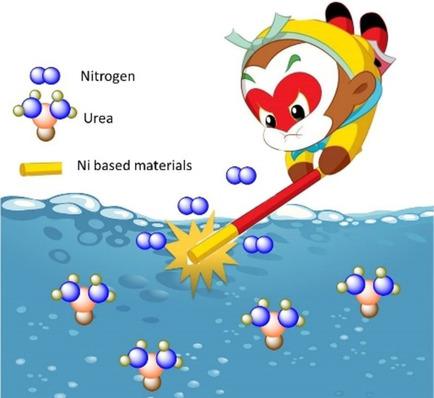当前位置:
X-MOL 学术
›
ChemElectroChem
›
论文详情
Our official English website, www.x-mol.net, welcomes your feedback! (Note: you will need to create a separate account there.)
Urea Electrooxidation: Current Development and Understanding of Ni‐Based Catalysts
ChemElectroChem ( IF 4 ) Pub Date : 2020-05-26 , DOI: 10.1002/celc.202000404 Xinrang Hu 1 , Jiaye Zhu 1 , Jiangfeng Li 1 , Qingsheng Wu 2
ChemElectroChem ( IF 4 ) Pub Date : 2020-05-26 , DOI: 10.1002/celc.202000404 Xinrang Hu 1 , Jiaye Zhu 1 , Jiangfeng Li 1 , Qingsheng Wu 2
Affiliation

|
Nowadays, urea‐rich wastewater has become a big threat to human health. Electrocatalytic techniques can convert urea from urea‐rich wastewater to hydrogen for ecological protection and clean energy generation. But, the urea oxidation reaction suffers sluggish kinetics, which requires effective catalysts to promote the oxidation process. Recently, Ni‐based materials have been widely researched as catalysts in the field of urea electrooxidation, owing to their low cost, low overpotential, high current density and good catalytic stability. However, urea‐based fuel cells cannot be compared with other types of cryogenic fuel cells, owing to the high action temperature, sluggish anode reaction for urea electrooxidation and limited current density. In this Review, the morphological structure and elemental content ratio of nickel‐based catalysts for urea electrooxidation and their application in urea‐based fuel cells are summarized. Based on a literature review, the 3D structure of complex nickel‐based composites with high conductivity and abundant active sites will be part of developing trends in the future nickel‐based catalysts.
中文翻译:

尿素电氧化:镍基催化剂的最新发展和认识
如今,富含尿素的废水已成为对人类健康的重大威胁。电催化技术可以将尿素从富含尿素的废水转化为氢气,从而实现生态保护和清洁能源的产生。但是,尿素氧化反应的动力学缓慢,这需要有效的催化剂来促进氧化过程。近年来,由于镍基材料成本低,过电位低,电流密度高和催化稳定性好,因此在尿素电氧化领域已被广泛用作催化剂。但是,由于尿素基燃料电池的作用温度高,尿素电氧化阳极反应缓慢且电流密度有限,因此无法与其他类型的低温燃料电池进行比较。在这篇评论中,总结了尿素电氧化镍基催化剂的形态结构和元素含量比及其在尿素基燃料电池中的应用。根据文献综述,具有高电导率和丰富活性位点的复杂镍基复合材料的3D结构将成为未来镍基催化剂发展趋势的一部分。
更新日期:2020-08-03
中文翻译:

尿素电氧化:镍基催化剂的最新发展和认识
如今,富含尿素的废水已成为对人类健康的重大威胁。电催化技术可以将尿素从富含尿素的废水转化为氢气,从而实现生态保护和清洁能源的产生。但是,尿素氧化反应的动力学缓慢,这需要有效的催化剂来促进氧化过程。近年来,由于镍基材料成本低,过电位低,电流密度高和催化稳定性好,因此在尿素电氧化领域已被广泛用作催化剂。但是,由于尿素基燃料电池的作用温度高,尿素电氧化阳极反应缓慢且电流密度有限,因此无法与其他类型的低温燃料电池进行比较。在这篇评论中,总结了尿素电氧化镍基催化剂的形态结构和元素含量比及其在尿素基燃料电池中的应用。根据文献综述,具有高电导率和丰富活性位点的复杂镍基复合材料的3D结构将成为未来镍基催化剂发展趋势的一部分。


























 京公网安备 11010802027423号
京公网安备 11010802027423号